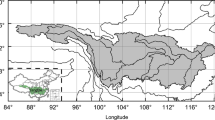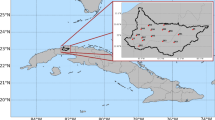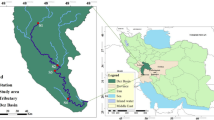Abstract
Increasing water demand is exacerbating water shortages in water-scarce regions (such as India, China, and Iran). Effective water demand forecasting is essential for the sustainable management of water supply systems in watersheds. To alleviate the contradiction between water supply and demand in the basin, with water demand for economic growth as the main target, a hybrid moving autoregressive and deep neural network model (ARMA-DNN) was developed in this study, and four commonly used statistical indicators (MAE, RMSE, MSE, and R2) were selected to evaluate the performance of the model. Finally, the validity and practicality of the model were verified by taking the Minjiang River basin in China as an example. The results show that (a) the model can predict future water demand more accurately under the conditions of actual water consumption changes, (b) the ideal agricultural production in the Minjiang River Basin is predicted to be reached 2.26 × 109t in 2021, and (c) the highest industrial economic efficiency in Chengdu is 1.51 × 109yuan, while water satisfaction reaches 102%. This means that effective water demand forecasting can alleviate water demand conflicts under climate change conditions to a certain extent. At the same time, watershed managers can develop different water allocation schemes based on the prediction results of the hybrid ARMA-DNN model.







Similar content being viewed by others
Availability of data and materials
References
Ahmad T, Chen H (2019) Nonlinear autoregressive and random forest approaches to forecasting electricity load for utility energy management systems. Sustain Cities Soc 45:460–473. https://doi.org/10.1016/j.scs.2018.12.013
Ahmad T, Chen H (2020) A review on machine learning forecasting growth trends and their real-time applications in different energy systems. Sustain Cities Soc 54:102010. https://doi.org/10.1016/j.scs.2019.102010
Alizadeh Z, Yazdi J, Kim JH, Al-Shamiri AK (2018) Assessment of machine learning techniques for monthly flow prediction. Water. 10(11):1676. https://doi.org/10.3390/w10111676
Bai T, Chang J, Chang F et al (2015) Synergistic gains from the multi-objective optimal operation of cascade reservoirs in the Upper Yellow River basin. J Hydrol 523:758–767. https://doi.org/10.1016/j.jhydrol.2015.02.007
Cai X (2005) Risk in irrigation water supply and the effects on food production. J Am Water Resour Assoc 41(3):679–692. https://doi.org/10.1111/j.1752-1688.2005.tb03763.x
Catal JPS, Pousinho HMI et al (2011) Hybrid wavelet-PSO-ANFIS approach for short-term electricity prices forecasting. IEEE Trans Power Syst 26(1):137–144. https://doi.org/10.1109/TPWRS.2010.2049385
D’Exelle B (2005) Equity-efficiency trade-offs in irrigation water sharing: evidence from a field lab in rural Tanzania. World Dev 40(12):2537–2551. https://doi.org/10.1016/j.worlddev.2012.05.026
Dariane AB, Azimi S (2018) Streamflow forecasting by combining neural networks and fuzzy models using advanced methods of input variable selection. J Hydroinf 20(2):520–532. https://doi.org/10.2166/hydro.2017.076
Dehghani M, Riahi-Madvar H et al (2019) Prediction of hydropower generation using grey wolf optimization adaptive neuro-fuzzy inference system. Energies. https://doi.org/10.3390/en12020289
Du H, Zhao Z, Xue H (2020) ARIMA-M: A New Model for Daily Water Consumption Prediction Based on the Autoregressive Integrated Moving Average Model and theMarkov Chain Error Correction. Water 12(3):760. https://doi.org/10.3390/w12030760
Finlayson BW (2017) Estimating urban water demand under conditions of rapid growth: the case of Shanghai. Reg Environ Chang 17(4):1163–1164. https://doi.org/10.1007/s10113-017-1124-6
Guo W, Liu T, Dai F et al (2019) An improved whale optimization algorithm for forecasting water resources demand. Appl Soft Comput 86:105925. https://doi.org/10.1016/j.asoc.2019.105925
He X, Luo J, Zuo G et al (2019) Daily runoff forecasting using a hybrid model based on variational mode decomposition and deep neural networks. Water Resour Manag 33(4):1571–1590. https://doi.org/10.1007/s11269-019-2183-x
Hu Z, Wei C, Yao L et al (2016) A multi-objective optimization model with conditional value-at-risk constraints for water allocation equality. J Hydrol 542:330–342. https://doi.org/10.1016/j.jhydrol.2016.09.012
Hu Z, Hu J, Hu H et al (2020) Predictive habitat suitability modeling of deep-sea framework-forming scleractinian corals in the Gulf of Mexico. Sci Total Environ 742:140562. https://doi.org/10.1016/j.scitotenv.2020.140562
Huang L, Zhang C, Peng Y et al (2014) Application of a combination model based on wavelet transform and KPLS-ARMA for urban annual water demand forecasting. J Water Resour Plan Manag 140(8):04014013. https://doi.org/10.1061/(ASCE)WR.1943-5452.0000397
Joodavi A, Izady A, Maroof M et al (2020) Deriving optimal operational policies for off-stream man-made reservoir considering conjunctive use of surface- and groundwater at the Bar dam reservoir (Iran). J Hydrol: Reg Stud 3:100725. https://doi.org/10.1016/j.ejrh.2020.100725
Kim D, Choi J, Kim D, et al (2020) Predicting mineralogy by integrating core and well log data using a deep neural network. J Pet Sci Eng 195(2):107838. https://doi.org/10.1016/j.petrol.2020.107838
Liu R, Michael M, Glover KP et al (2018) Assessing deep and shallow learning methods for quantitative prediction of acute chemical toxicity. Toxicol Sci 164(2):512–526. https://doi.org/10.1093/toxsci/kfy111
Liu X, Zhang Z, Song Z (2020) A comparative study of the data-driven day-ahead hourly provincial load forecasting methods: from classical data mining to deep learning. Renew Sust Energ Rev 119:109632. https://doi.org/10.1016/j.rser.2019.109632
Löwe R, Böhm J et al (2021) U-FLOOD – topographic deep learning for predicting urban pluvial flood water depth. J Hydrol 603:126898. https://doi.org/10.1016/j.jhydrol.2021.126898
Madrigal J, Solera A, Suárez-Almiana S et al (2018) Skill assessment of a seasonal forecast model to predict drought events for water resource systems. J Hydrol 564:574–587. https://doi.org/10.1016/j.jhydrol.2018.07.046
Niu W, Feng Z (2021) Evaluating the performances of several artificial intelligence methods in forecasting daily streamflow time series for sustainable water resources management. Sustain Cities Soc 64:102562. https://doi.org/10.1016/j.scs.2020.102562
Ou D, Tan K, Lai J et al (2021) Semi-supervised DNN regression on airborne hyperspectral imagery for improved spatial soil properties prediction. Geoderma. 385:114875. https://doi.org/10.1016/j.geoderma.2020.114875
Quilty J, Adamowski J (2018, 2018) Addressing the incorrect usage of wavelet-based hydrological and water resources forecasting models for real-world applications with best practices and a new forecasting framework. J Hydrol:336–353. https://doi.org/10.1016/j.jhydrol.2018.05.003
Quilty J, Adamowski J (2020) A stochastic wavelet-based data-driven framework for forecasting uncertain multiscale hydrological and water resources processes. Environ Model Softw 130:104718. https://doi.org/10.1016/j.envsoft.2020.104718
Quilty J, Adamowski J, Boucher M (2018) A stochastic data-driven ensemble forecasting framework for water resources: a case study using ensemble members derived from a database of deterministic wavelet-based models. Water Resour Res 55(1):175–202. https://doi.org/10.1029/2018WR023205
Sahour H, Gholami V, Vazifedan M (2020) A comparative analysis of statistical and machine learning techniques for mapping the spatial distribution of groundwater salinity in a coastal aquifer. J Hydrol 591:125321. https://doi.org/10.1016/j.jhydrol.2020.125321
Sharma SK (2021) A novel approach on water resource management with Multi-Criteria Optimization and Intelligent Water Demand Forecasting in Saudi Arabia. Environ Res 208:112578. https://doi.org/10.1016/j.envres.2021.112578
Sulaiman, Oleiwi S, Ravinesh C et al (2019) An enhanced extreme learning machine model for river flow forecasting: state-of-the-art, practical applications in water resource engineering area and future research direction. J Hydrol 569:387–408. https://doi.org/10.1016/j.jhydrol.2018.11.069
Sun Y, Liu N, Shang J et al (2016) Sustainable utilization of water resources in China: a system dynamics model. J Clean Prod 142(2):613–625. https://doi.org/10.1016/j.jclepro.2016.07.110
Swfab C, Dcg A, Agg A et al (2021) Assessing the new Natural Resources Conservation Service water supply forecast model for the American West: a challenging test of explainable, automated, ensemble artificial intelligence. J Hydrol 602:126782. https://doi.org/10.1016/j.jhydrol.2021.126782
Tanveer A, Huan C (2019) Nonlinear autoregressive and random forest approaches to forecasting electricity load for utility energy management systems. Sustain Cities Soc 45:460–473. https://doi.org/10.1016/j.scs.2018.12.013
Van Campenhout (2015) Equity-efficiency optimizing resource allocation: the role of time preferences in a repeated irrigation game. Oxf Bull Econ Stat 77(2):234–253. https://doi.org/10.1111/obes.12058
Wu CL, Chau KW (2013) Prediction of rainfall time series using modular soft computing methods. Eng Appl Artif Intell 26(3):997–1007. https://doi.org/10.1016/j.engappai.2012.05.023
Xu D, Wang W, Chau K et al (2013) Comparison of three global optimization algorithms for calibration of the Xinanjiang model parameters. J Hydroinf 15(1):174–193. https://doi.org/10.2166/hydro.2012.053
Xu J, Ma N, Lv C (2016) Dynamic equilibrium strategy for drought emergency temporary water transfer and allocation management. J Hydrol 539:700–722. https://doi.org/10.1016/j.jhydrol.2016.02.055
Xu B, Zhong PA, Wu Y et al (2017) A multiobjective stochastic programming model for hydropower hedging operations under inexact information. Water Resour Manag 31(14):4649–4667. https://doi.org/10.1007/s11269-017-1771-x
Yan L, Liu M (2020) A simplified prediction model for energy use of air conditioner in residential buildings based on monitoring data from the cloud platform. Sustain Cities Soc 60:102194. https://doi.org/10.1016/j.scs.2020.102194
Yang T, Gao X, Sorooshian S et al (2016) Simulating California reservoir operation using the classification and regression-tree algorithm combined with a shuffled cross-validation scheme. Water Resour Res 52(3):1626–1651. https://doi.org/10.1002/2015WR017394
Yang T, Welles E, Gao X, Sorooshian S, Liu. (2017) Developing reservoir monthly inflow forecasts using artificial intelligence and climate phenomenon information. Water Resour Res 53(4):2786–2812. https://doi.org/10.1002/2017WR020482
Yang H, Pan Z, Tao Q et al (2018) Online learning for vector autoregressive moving-average time series prediction. Neurocomputing. 315:9–17. https://doi.org/10.1016/j.neucom.2018.04.011
Zhang Q, Diao Y, Dong J (2013) Regional water demand prediction and analysis based on Cobb-Douglas model. Water Resour Manag 27(8):3103–3113. https://doi.org/10.1007/s11269-013-0335-y
Zhou YL, Guo SL et al (2015) Integrated optimal allocation model for complex adaptive system of water resources management (II): Case study. J Hydrol 531(1):977–991. https://doi.org/10.1016/j.jhydrol.2015.10.043
Funding
This work was supported by the National Natural Science Foundation of China (Grant numbers [71771157]) and the Fundamental Research Funds for the System Science and Enterprise Development Research Center of Sichuan Key Research Base of Social Sciences (Grant number [Xq21B11]).
Author information
Authors and Affiliations
Contributions
Guangze Liu: conceptualization, methodology, validation, data curation, and methodology and writing–original draft. Mingkang Yuan: conceptualization, methodology, validation, revision of the manuscript, editing, and software. Xudong Chen: conceptualization and software. Xiaokun Lin: validation, data curation, and writing–original draft; Qingqing Jiang: data curation, supervision, and writing–review and editing. The authors read and approved the final manuscript.
Corresponding author
Ethics declarations
Ethics approval and consent to participate
The experimental scheme was formulated by the water resources allocation guidelines of Dujiangyan Management Committee and obtained personal written informed consent.
Consent for publication
Not applicable.
Conflict of interest
The authors declare no competing interests.
Additional information
Responsible Editor: Marcus Schulz
Publisher’s note
Springer Nature remains neutral with regard to jurisdictional claims in published maps and institutional affiliations.
Highlights
(1) A hybrid ARMA-DNN model is constructed to forecast water consumption.
(2) Analyzed the water demand plans of the watershed water use sectors.
(3) Assessed water allocation schemes corresponding to future water demand.
Rights and permissions
Springer Nature or its licensor holds exclusive rights to this article under a publishing agreement with the author(s) or other rightsholder(s); author self-archiving of the accepted manuscript version of this article is solely governed by the terms of such publishing agreement and applicable law.
About this article
Cite this article
Liu, G., Yuan, M., Chen, X. et al. Water demand in watershed forecasting using a hybrid model based on autoregressive moving average and deep neural networks. Environ Sci Pollut Res 30, 11946–11958 (2023). https://doi.org/10.1007/s11356-022-22943-8
Received:
Accepted:
Published:
Issue Date:
DOI: https://doi.org/10.1007/s11356-022-22943-8




